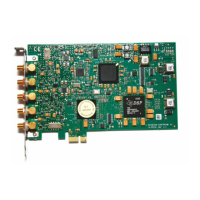240
Transmission Modes WAVECOM Decoder W74PC, W-PCI/e, W-CODE, W-CLOUD Manual V9.1.0
With the help of the FFT-Analysis-Tool look for a SAT-MINI-M-HSD signal (bandwidth 40 kHz, QAM16 33.6
kSymbol/sec) with a lot of traffic.
In the Satellite mode menu choose Inmarsat, SAT-MINI-M-C-HSD.
The Session Window displays the start and end of a session. The “MES_ID” displayed is the return MESId
of the MES (Mobile Earth Station); the “Frequency” is a dummy value.
The Session List Window displays the results of the successfully decoded sessions. The decoded data is
saved as “Hsd.txt”.
Additional information:
See “SAT Settings…” on page 44.
See “SAT System” on page 298.
SI-ARQ
SI-ARQ is a simplex system similar to for example SITOR. SI-ARQ therefore also sounds similar to the
well-known SITOR system. Because data and pause blocks are longer in duration, the perception of a low-
er baud rate is created.
SI-ARQ operates at symbol rates of 96, 192 or 200 Bd on the radio link.
SI-ARQ uses the ITA-3 alphabet for data transmission and error detection. Data blocks usually consist of 5
or 6 characters.
One transmission cycle is made up of twice the length of a character block. If the information sending sta-
tion (ISS) receives an acknowledgement character, the next data block is sent with inverted phase or po-
larity. However, if the receiving station (IRS) requests a retransmission, the repeated block is sent with
unchanged polarity.
If the ISS does not receive the acknowledgement packet, it transmits a RQ block as is the case with SI-
TOR.
The software automatically detects SI-ARQ block lengths of four, five or six characters and displays this
information after phasing has been achieved. The polarity of the signal is automatically detected.
Transmission Sequence of SI-ARQ at 96 Baud with Five Characters
SI-AUTO
Fully automatic tuning to signal center, shift and transmission modes SI-ARQ (Mode A) and SI-FEC (Mode
B) may be achieved by selecting SI-AUTO mode.

